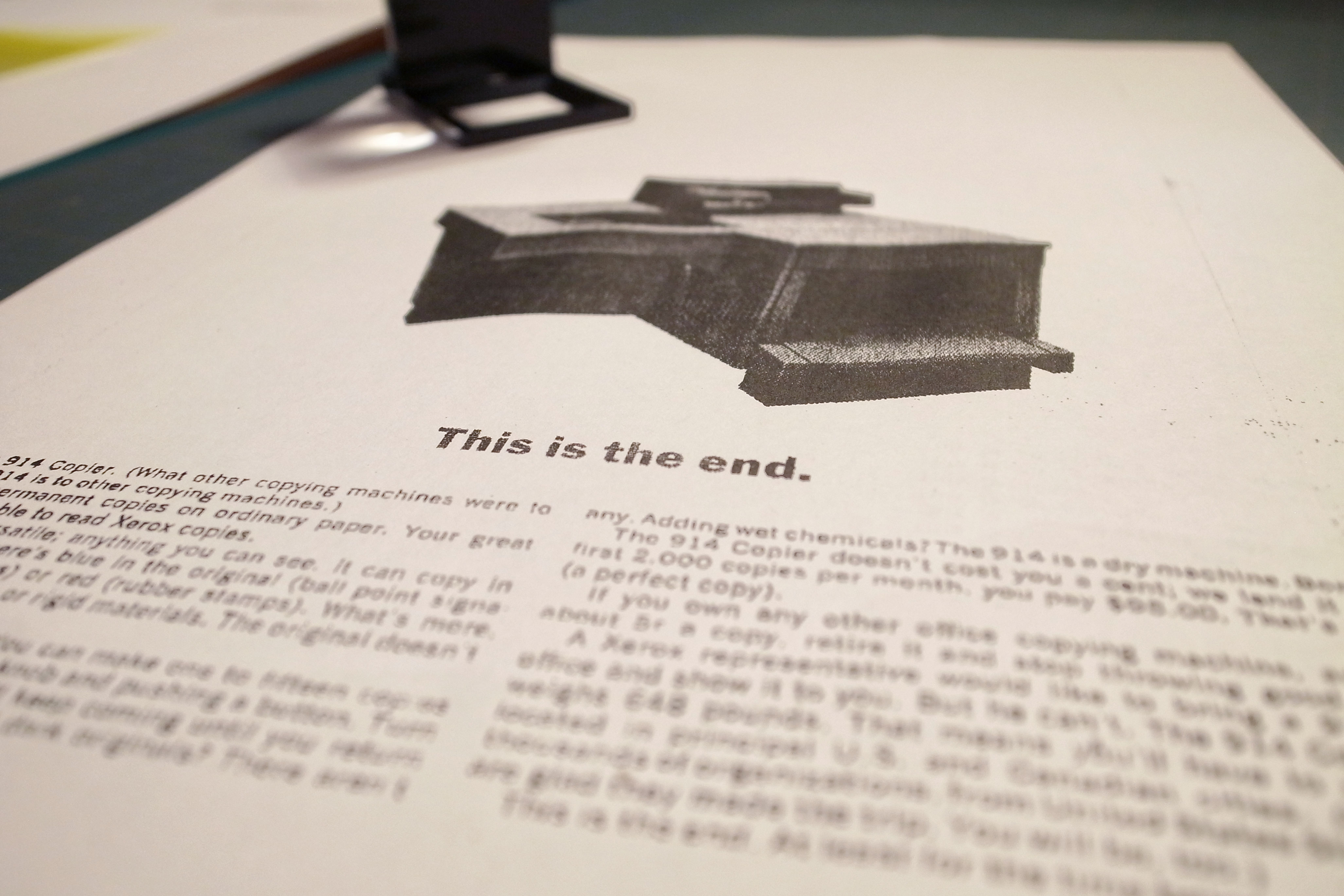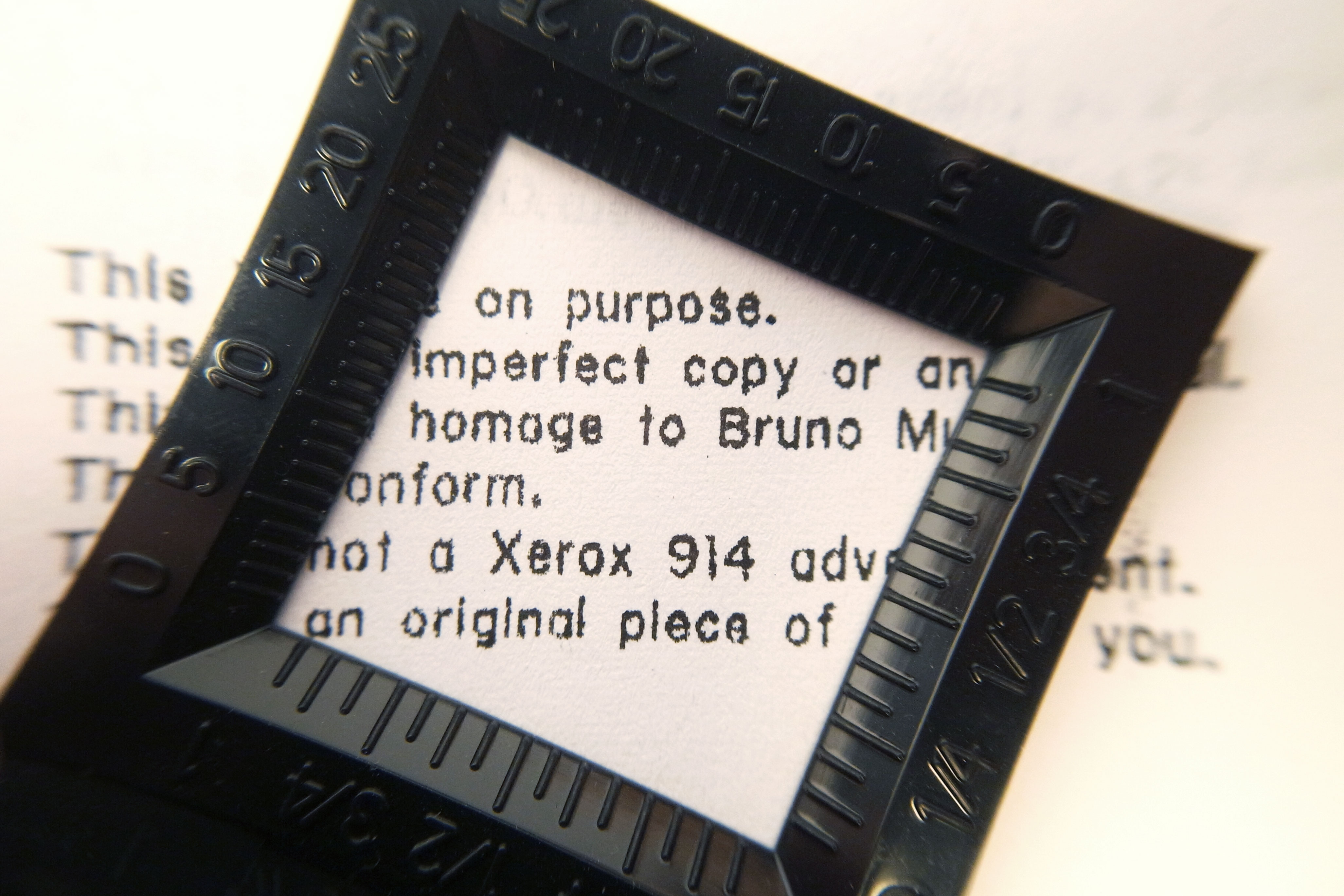 Single page insert (double sided)
Single page insert (double sided)Edition of 50
21 x 29,7 cm
editor: Klangfolger
Original Copies addresses the fetishism and sacralization of the original in art and the resulting relation to copies. The idea of one original is the basis of the art market which creates its value through rarity. In an economic system where individualism and property are central, the construct of the genius Artist and limited production are entangled to define the economical value of an artwork. Art institutions often exchange the original with a copy, deluding the public while reiterating the fetish of the original. Photographs are destroyed after exhibition to preserve the unicity of the first print. Original copies is an ironic work that has the copy as a starting point. It shows a Xerox 914 advertisement from 1961. The 914 was the first photocopier, replacing analog duplicators. It revolutionized the copying industry, our reading behavior, and our relation to authorship. From the start Xerox developed its advertisement campaigns around the perfection of the copies, arguing that no differences could be found between the original document and its copies. It is an homage to the artist and designer Bruno Munari. In the 70's Munari produced a series called Original Xerographies. The work consisted in moving objects or images placed on the copier, while still in motion, resulting in 'impossible-to-replicate' image. What was then printed was not a copy of the original but an original itself. During his first show in a gallery in New York, he came with a copier and produced more of his Original Xerographies at the entrance of the gallery and offered them to by-passers. The gallery owner was pissed. The Original Copies are printed on an analog stencil duplicator, where imperfection is part of the printing process. Therefore original and copy merge into one, because what is an original if not an imperfect copy.


